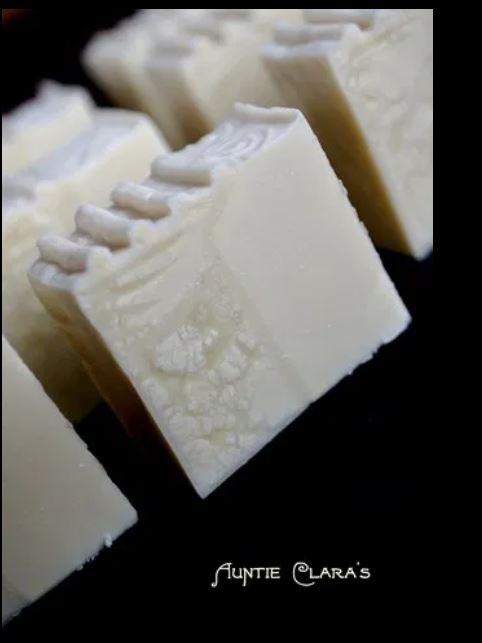

Anyone who has made soap for any period of time has almost certainly come across a phenomenon whereby that gorgeous picture you had in your head for your soap does not come out quite as planned – it has a crackly, aged look with clear tiger stripes (rivers) through it that just seem strange. But fear not – many soap makers have gone before us and have gone a long way to solving the mystery of why glycerine rivers appear, so settle back with a cuppa and come along for the ride, while we explore the mystery of Glycerine Rivers.

First though – you will notice I called this article “Glycerine Rivers – Friend or Foe?” – this is because while some people think they are mistakes and make “ugly” soap, others have found ways to incorporate the look into their soaps. Because – while you may not have been aiming for a lined and aged look in your soap, it can have some very cool affects – and the soap itself can be amazing.
The example below is from my collection – and it is called “Ancient Gardens” because it has that aged, marble look which was created by forcing glycerine rivers, and using a fragrance that discolours to a “stone” shade.

So – firstly, let’s look at what are Glycerine Rivers?
What are glycerine rivers
All handmade cold-process soap contains glycerine. It is a naturally-occurring by product of the soap making process, attracts moisture to the skin, hydrating it and it also adds cleansing properties. It is one of the things that makes handmade soap so luxuriating and amazing.
Why “rivers”?
The most common reason glycerine rivers form in cold process soap making is a high water content in the lye solution, coupled with the addition of some pigments, particularly Titanium Dioxide. They may become even more pronounced if the soap reaches a higher temperature (“gel”) during the saponification process.
How to prevent them
If you want to be more certain of creating a smooth bar, here are a few tips to help avoid them:
- Try a water discount of at least 10%. That just means using 10% less water than is recommended by your soap recipe calculator. Not only will that help prevent glycerine rivers, it will also help your soap cure more quickly, as there will be less water to evaporate from the finished bar.
- Make sure to disperse your Titanium Dioxide (TD) in a small amount of oil before adding to your mix, or directly into your lye solution (if you want to lighten the entire batch). That way, you won’t inadvertently add more water to your mix;
There are some soap makers who suggest that you should soap at lower temperatures and then put the mould in the freezer for 24 hours to keep it cold to prevent gel phase, however there is an awesome post by Clara Lindberg of Auntie Clara’s Handcrafted Cosmetics where she explains an experiment she undertook to get to the bottom of the glycerine river mystery – here: glycerine-rivers-secret-revealed. Take the time to read it, and in the end, it is very obvious that water is the key.
So – how did I force glycerine rivers? Easy – I just did the exact opposite of Auntie Clara’s recommendation – I increased the water content and dispersed the TD into water – adding a fragrance oil that discolours, and hey presto – crackled stone effect.

Glycerine rivers can be problematic if the glycerine congregates too much in one area – it will make that part of the soap softer and more pliable than the rest of the bar – and they can spoil the look of a soap if you are after a perfectly smooth and unblemished bar, but many consumers find they add interest and character – so don’t stress if you find you have created a marbled masterpiece.
